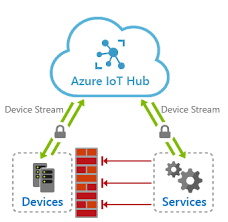Audience
This instructor-led training course teaches developers the programming skills that are required for developers to create Windows applications using the Visual C# language. During their five days in the classroom students review the basics of Visual C# program structure, language syntax, and implementation details, and then consolidate their knowledge throughout the week as they build an application that incorporates several features of the .NET Framework
Prerequisites
• Developers attending this course should already have gained some limited experience using C# to complete basic programming tasks. More specifically, students should have hands-on experience using C# that demonstrates their understanding of the following:
• How to name, declare, initialize and assign values to variables within an application.
• How to use: arithmetic operators to perform arithmetic calculations involving one or more variables; relational operators to test the relationship between two variables or expressions; logical operators to combine expressions that contain relational operators.
• How to create the code syntax for simple programming statements using C# language keywords and recognize syntax errors using the Visual Studio IDE.
• How to create a simple branching structure using an IF statement.
• How to create a simple looping structure using a For statement to iterate through a data array.
• How to use the Visual Studio IDE to locate simple logic errors.
• How to create a Function that accepts arguments (parameters and returns a value of a specified type).
• How to design and build a simple user interface using standard controls from the Visual Studio toolbox.
• How to connect to a SQL Server database and the basics of how to retrieve and store data.
• How to sort data in a loop.
• How to recognize the classes and methods used in a program. features of the .NET Framework
Skills Gained
After completing this course, students will be able to:
• Describe the core syntax and features of Visual C#.
• Create methods, handle exceptions, and describe the monitoring requirements of large-scale applications.
• Implement the basic structure and essential elements of a typical desktop application.
• Create classes, define and implement interfaces, and create and use generic collections.
• Use inheritance to create a class hierarchy and to extend a .NET Framework class.
• Read and write data by using file input/output and streams, and serialize and deserialize data in different formats.
• Create and use an entity data model for accessing a database and use LINQ to query data.
• Access and query remote data by using the types in the System.Net namespace and WCF Data Services.
• Build a graphical user interface by using XAML.
• Improve the throughput and response time of applications by using tasks and asynchronous operations.
• Integrate unmanaged libraries and dynamic components into a Visual C# application.
• Examine the metadata of types by using reflection, create and use custom attributes, generate code at runtime, and manage assembly versions.
• Encrypt and decrypt data by using symmetric and asymmetric encryption.
Course outline
Module 1: Review of Visual C# Syntax
• Lesson 1: Overview of Writing Application by Using Visual C#
• Lesson 2: Data Types, Operators, and Expressions
• Lesson 3: Visual C# Programming Language Constructs
• Lab: Developing the Class Enrollment Application
Module 2: Creating Methods, Handling Exceptions, and Monitoring Applications
• Lesson 1: Creating and Invoking Methods
• Lesson 2: Creating Overloaded Methods and Using Optional
• and Output Parameters
• Lesson 3: Handling Exceptions
• Lesson 4: Monitoring Applications
• Lab: Extending the Class Enrollment Application Functionality
Module 3: Basic Types and Constructs of Visual C#
• Lesson 1: Implementing Structs and Enums
• Lesson 2: Organizing Data into Collections
• Lesson 3: Handling Events
• Lab: Writing the Code for the Grades Prototype Application
Module 4: Creating Classes and Implementing Type-Safe Collections
• Lesson 1: Creating Classes
• Lesson 2: Defining and Implementing Interfaces
• Lesson 3: Implementing Type-Safe Collections
• Lab: Adding Data Validation and Type-Safety to the Application
Module 5: Creating a Class Hierarchy by Using Inheritance
• Lesson 1: Creating Class Hierarchies
• Lesson 2: Extending .NET Framework Classes
• Lab: Refactoring Common Functionality into the User Class
Module 6: Reading and Writing Local Data
• Lesson 1: Reading and Writing Files
• Lesson 2: Serializing and Deserializing Data
• Lesson 3: Performing I/O by Using Streams
• Lab: Generating the Grades Report
Module 7: Accessing a Database
• Lesson 1: Creating and Using Entity Data Models
• Lesson 2: Querying Data by Using LINQ
• Lab: Retrieving and Modifying Grade Data
Module 8: Accessing Remote Data
• Lesson 1: Accessing Data Across the Web
• Lesson 2: Accessing Data by Using OData Connected Services
• Lab: Retrieving and Modifying Grade Data Remotely
Module 9: Designing the User Interface for a Graphical Application
• Lesson 1: Using XAML to Design a User Interface
• Lesson 2: Binding Controls to Data
• Lesson 3: Styling a UI
• Lab: Customizing Student Photographs and Styling the Application
Module 10: Improving Application Performance and Responsiveness
• Lesson 1: Implementing Multitasking
• Lesson 2: Performing Operations Asynchronously
• Lesson 3: Synchronizing Concurrent Access to Data
• Lab: Improving the Responsiveness and Performance of the Application
Module 11: Integrating with Unmanaged Code
• Lesson 1: Creating and Using Dynamic Objects
• Lesson 2: Managing the Lifetime of Objects and Controlling
• Unmanaged Resources
• Lab: Upgrading the Grades Report
Module 12: Creating Reusable Types and Assemblies
• Lesson 1: Examining Object Metadata
• Lesson 2: Creating and Using Custom Attributes
• Lesson 3: Generating Managed Code
• Lesson 4: Versioning, Signing, and Deploying Assemblies
• Lab: Specifying the Data to Include in the Grades Report
Module 13: Encrypting and Decrypting Data
• Lesson 1: Implementing Symmetric Encryption
• Lesson 2: Implementing Asymmetric Encryption
• Lab: Encrypting and Decrypting the Grades Report
Schedule
Click on the following link to see the current Course Schedule
Our minimum class-size is 3 for this course.
If there are no scheduled dates for this course, it can be customized to suit the time and skill needs of clients and it can be held online, at a rented location or at your premises.
Click on the following link below to arrange for a custom course: Enquire about a course date







Reviews
There are no reviews yet.